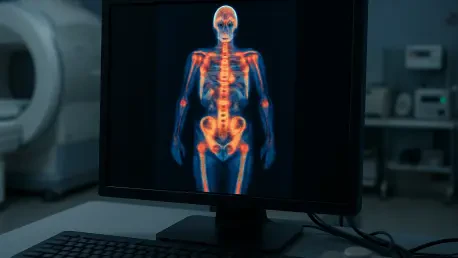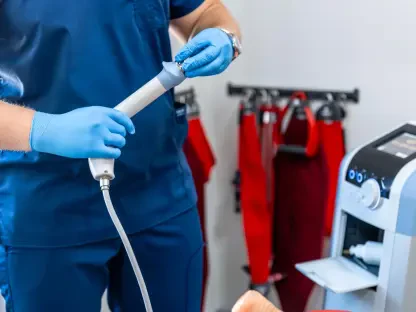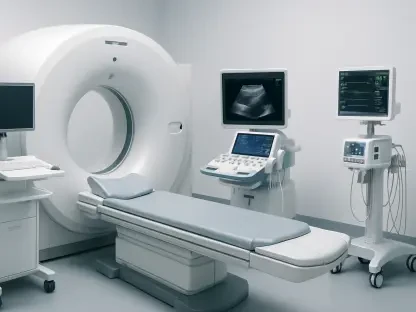Imagine a future where robots, initially designed to navigate the perilous environments of nuclear facilities, are seamlessly integrated into hospital wards, assisting with surgeries, transporting medical supplies, and ensuring patient safety in ways previously thought impossible. This scenario is not a distant dream but a tangible possibility, as the expertise honed in the nuclear industry is beginning to cross over into the healthcare sector, particularly within the UK’s National Health Service (NHS). A recent visit by Health Innovation North West Coast to RAICo (Robotics and Artificial Intelligence Collaboration) in Whitehaven, Cumbria, has sparked discussions about how robotic technologies developed for nuclear decommissioning and fusion energy projects can address pressing challenges in healthcare. The potential to improve patient outcomes, enhance efficiency, and create sustainable care models is immense, opening doors to a new era of medical innovation inspired by an unexpected source. This exploration into cross-industry collaboration reveals a promising synergy that could redefine how technology serves public health.
Bridging Industries for Better Healthcare
The nuclear industry, through hubs like RAICo, has cultivated a deep well of knowledge in robotics, particularly in designing systems for hazardous environments where human safety is paramount. These advancements, driven by partnerships between entities such as the UK Atomic Energy Authority and Sellafield Ltd, focus on remote handling and autonomous transportation—skills that translate remarkably well to healthcare settings. In hospitals, similar technologies could be adapted to handle sensitive materials, assist in sterile environments, or even support surgeries with precision beyond human capability. Jenni West, Associate Director of Digital Transformation at Health Innovation North West Coast, emphasized the value of tapping into this expertise to revolutionize NHS operations. The potential benefits include not only improved patient care through safer and more accurate interventions but also significant cost savings by automating repetitive tasks, allowing medical staff to focus on critical decision-making and patient interaction.
Moreover, the transfer of robotic technology from nuclear to healthcare sectors is not merely about adopting tools but also about embracing a mindset of innovation tailored to specific challenges. The nuclear industry’s experience in developing robots for extreme conditions offers lessons in durability and adaptability, qualities essential for healthcare applications where reliability can mean the difference between life and death. For instance, robotic systems used in nuclear decommissioning must operate with minimal human intervention, a feature that could inspire solutions for remote patient monitoring or telemedicine in underserved areas. This cross-pollination of ideas underscores a broader opportunity to enhance NHS efficiency, ensuring that resources are allocated where they are most needed while maintaining high standards of care. By learning from another high-stakes field, the healthcare sector stands to gain robust systems that prioritize both safety and effectiveness.
User-Centered Innovation in Technology Adoption
A critical insight from RAICo’s approach to robotics is the concept of ‘pull’ rather than ‘push’ innovation, as highlighted by Director Kirsty Hewitson. This methodology prioritizes collaboration with front-line workers to identify specific needs before designing solutions, ensuring that technology addresses real-world problems rather than imposing untested ideas. For the NHS, this user-centered approach could transform how robotic systems are integrated into daily operations, particularly by involving healthcare professionals in the development process. Such collaboration ensures that tools are practical, intuitive, and aligned with the unique demands of medical environments, from emergency rooms to long-term care facilities. By focusing on the needs of doctors, nurses, and support staff, the adoption of robotics can enhance workflow efficiency, reduce burnout, and ultimately improve patient experiences through more personalized and timely care.
Beyond the design phase, the emphasis on user-driven innovation fosters a culture of trust and acceptance among healthcare workers, a crucial factor for successful technology integration. In the nuclear sector, robots are not seen as replacements for human workers but as essential partners in achieving complex goals, a perspective that can be mirrored in hospitals. Training programs and iterative feedback loops, inspired by RAICo’s collaborative model, could help NHS staff adapt to robotic assistants, ensuring that these tools augment rather than disrupt existing practices. This approach also mitigates the risk of resistance to change, a common barrier in large public systems, by demonstrating tangible benefits such as reduced physical strain and improved accuracy in repetitive tasks. The result is a healthcare ecosystem where technology and human expertise coexist harmoniously, driving better outcomes through shared purpose and tailored innovation.
Collaborative Frameworks for Future Progress
The momentum for integrating robotics into healthcare is evident in initiatives spearheaded by Health Innovation North West Coast, such as a stakeholder meeting held in Preston earlier this year. Bringing together representatives from health, industry, academia, and local government, the event aimed to accelerate the development, testing, and adoption of robotic technologies within the NHS. A dedicated board was established to coordinate these efforts, reflecting a consensus on the need for structured collaboration to harness emerging innovations. This model, inspired by RAICo’s partnerships, maximizes the use of taxpayer-funded resources while promoting economic growth and workforce development in the region. The collaborative framework ensures that advancements in robotics are not siloed within one sector but are shared across industries, creating a ripple effect of progress that benefits public services on a broader scale.
Additionally, the success of such partnerships hinges on a commitment to aligning technological advancements with practical and economic considerations. RAICo’s blueprint of cross-sector cooperation offers a roadmap for the NHS to navigate the complexities of adopting cutting-edge robotics while addressing budgetary constraints and scalability challenges. By pooling expertise and resources, stakeholders can develop solutions that are both innovative and sustainable, ensuring long-term viability within public healthcare systems. This approach also opens avenues for regional development, as local industries and academic institutions contribute to and benefit from the growth of a high-tech ecosystem. The synergy between nuclear and healthcare sectors, supported by inclusive partnerships, sets a precedent for how public sectors can leverage shared knowledge to tackle some of society’s most pressing issues, paving the way for transformative change.
Reflecting on Transformative Lessons
Looking back, the exploration of nuclear robotics’ impact on NHS healthcare revealed a powerful convergence of technology and human need, driven by insights gained during visits and meetings with pioneering hubs like RAICo. The lessons learned from the nuclear industry’s focus on safety, precision, and user-driven design proved invaluable in envisioning a future where robots become integral to medical care. Collaborative efforts, such as those initiated in Preston, laid the groundwork for actionable strategies that bridged sectoral divides. Moving forward, the next steps involve scaling these pilot initiatives, investing in training for healthcare staff, and fostering ongoing dialogue between industries to refine robotic applications. A commitment to tailoring solutions to real-world challenges, supported by robust partnerships, emerged as the cornerstone for ensuring that technological progress continues to enhance patient outcomes and system efficiency in meaningful ways.









